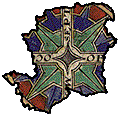
| Old Hampshire Mapped
|
|

| HANTSMAP Project
To the User |
| Legacy
|
This project was started in 1998. The website was designed with a slow internet connection in mind, but was not constrained by this. In particular,
we believed that the single sheet maps shown here should
be legible and presented in their entirety; this produces large files and they carry a warning. We also decided not to use any 3rd party software which could (and did) soon become obsolete, and whose smarter front-end access would actually make the maps less accessible for research purposes.
|
| Navigation
|
Our navigation is designed to be obvious
yes,
we know,
it never is!
We have used FRAMESETS because they provide the best way for you to keep your place whilst navigating around this complex interlinked website. In general the upper left button will take you back up the structure, but as the structure is not linear and the back button is sometimes more useful.
|



